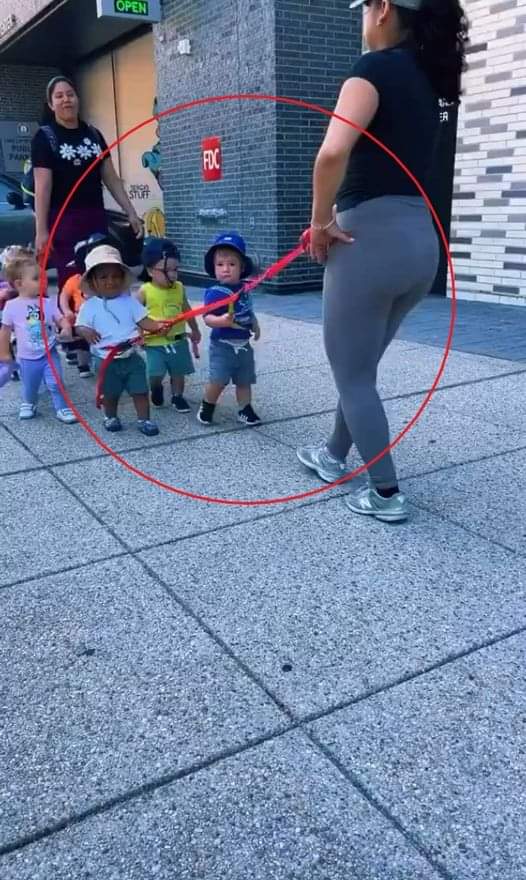In a video that has sparked debate, a teacher is seen taking students for a walk, and in an unexpected twist, the children are tied together to prevent them from getting lost. The description accompanying this scene reads: “Their teacher took them for a walk and tied them up so they wouldn’t get lost.” This situation raises several ethical questions: Is this an acceptable way to ensure safety, or is it an extreme and unnecessary measure?
Understanding the Teacher’s Intention
At first glance, it’s easy to see why a teacher would be concerned about students, particularly young ones, getting lost during outdoor activities. Keeping a group of children together, especially in unfamiliar environments, can be challenging. The teacher in the video might have intended to avoid any potential risks by tying the children together. This method could have seemed like a practical solution to maintain control and ensure no one wandered off.
However, the choice of physically restraining the children through ropes or ties introduces significant ethical concerns. While safety is crucial, the method used to achieve it must respect children’s dignity and their sense of autonomy.
The Question of Safety Versus Comfort
Safety should always be a top priority in educational settings. Teachers are entrusted with the well-being of their students and are responsible for taking measures to avoid harm. Yet, tying up students may cross a line that puts comfort and trust at risk. Children need to feel secure, but they should also feel respected.
There are safer and less restrictive methods to prevent children from getting lost, such as using child-friendly walking ropes, assigning groups with designated leaders, or even holding hands in smaller groups. These alternatives allow for supervision without crossing into questionable practices.
Potential Psychological Effects
Beyond the practical aspect of keeping students safe, there are potential psychological effects that could arise from such an experience. Being tied up, even in a well-meaning context, may cause feelings of fear, discomfort, or humiliation in children. It could damage the trust that students place in their teacher, which is essential for a healthy learning environment.
Additionally, if a child feels singled out or restrained without understanding the reasons, it may lead to feelings of helplessness or anxiety. Educators are role models, and their actions leave lasting impressions on children. Thus, their behavior should align with fostering a positive and respectful atmosphere.
Legal and Ethical Considerations
From a legal standpoint, tying up students, even with the best intentions, could violate rules regarding child safety and well-being. Educational institutions generally have guidelines in place to regulate how teachers handle students, especially in situations involving physical contact or restraint.
Ethically, educators are expected to treat students with care and respect. Methods that border on physical restraint could easily be interpreted as abusive or inappropriate, raising concerns among parents and guardians.
Is It Right or Wrong?
In summary, while the teacher’s intentions in the video might have been to protect the students, tying them up to ensure safety is neither the most ethical nor the most practical solution. There are alternative methods that promote safety while respecting the children’s dignity and comfort. While preventing students from getting lost is important, the way it is done must align with both ethical standards and common sense.
The teacher in the video may have overstepped, and the practice of tying up children for walks should be reconsidered in favor of more humane, child-friendly approaches. As a society, we must always balance safety with respect for the individual, particularly when dealing with young minds in an educational environment.

What do you think about this act, let us know on comments.



